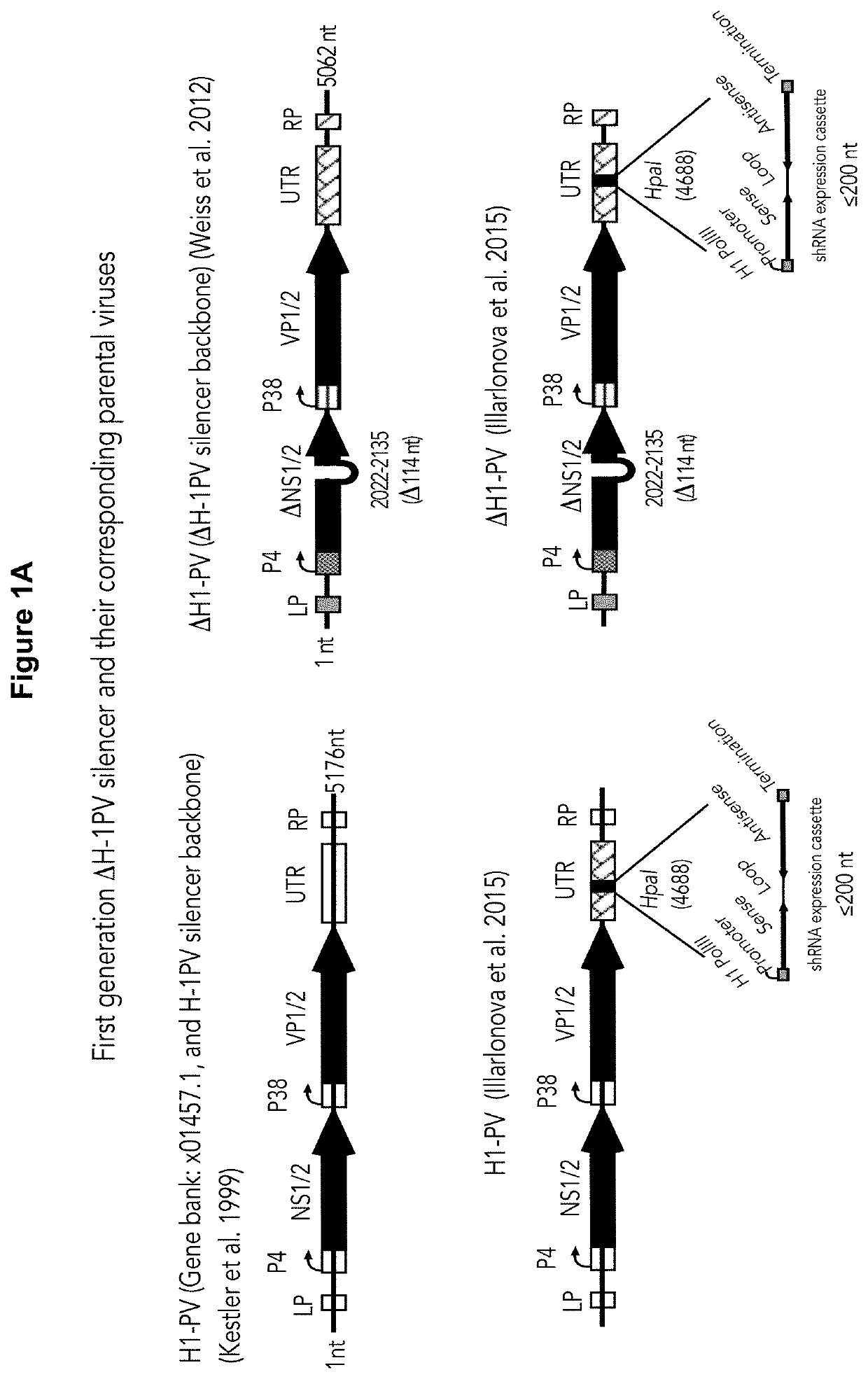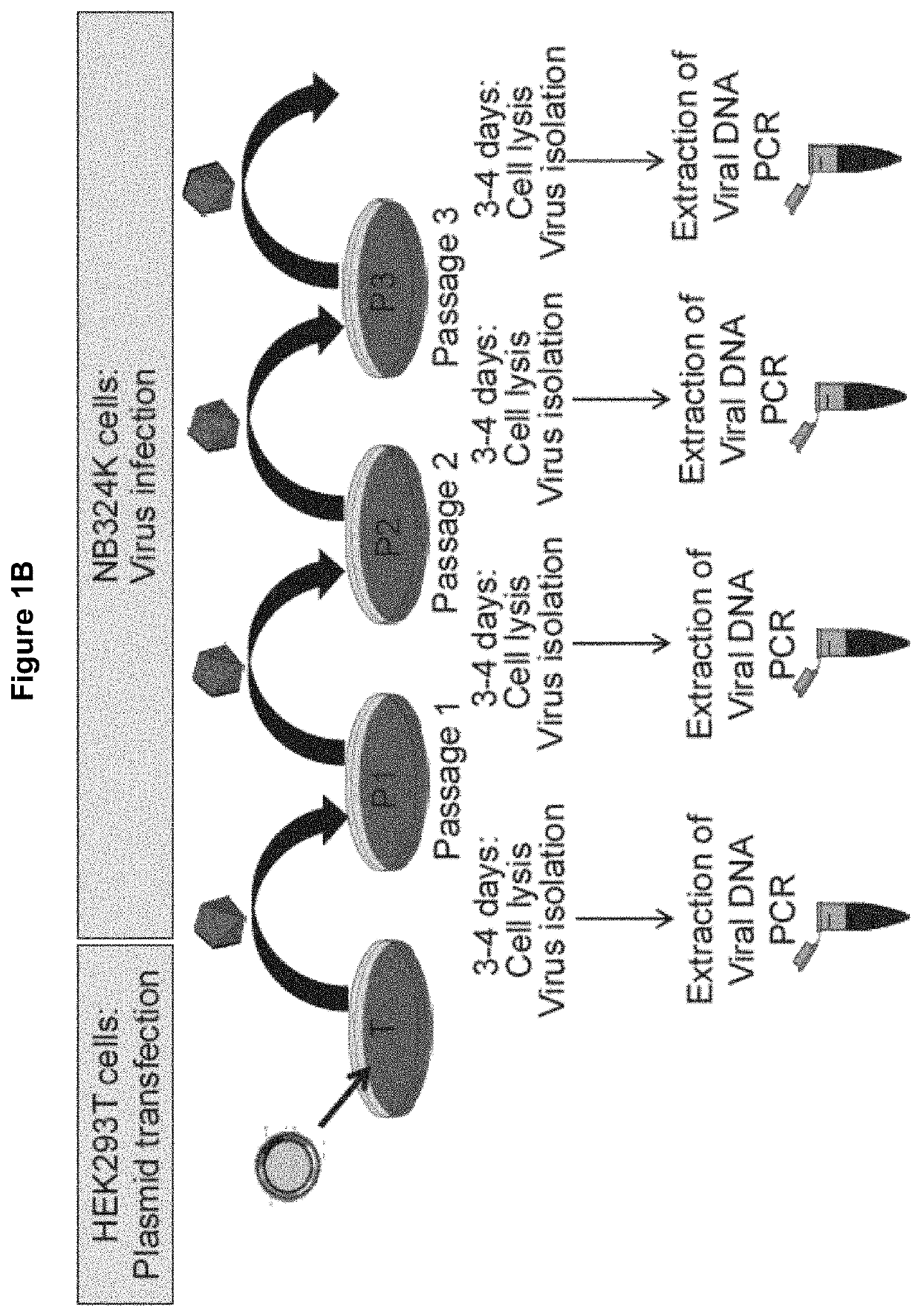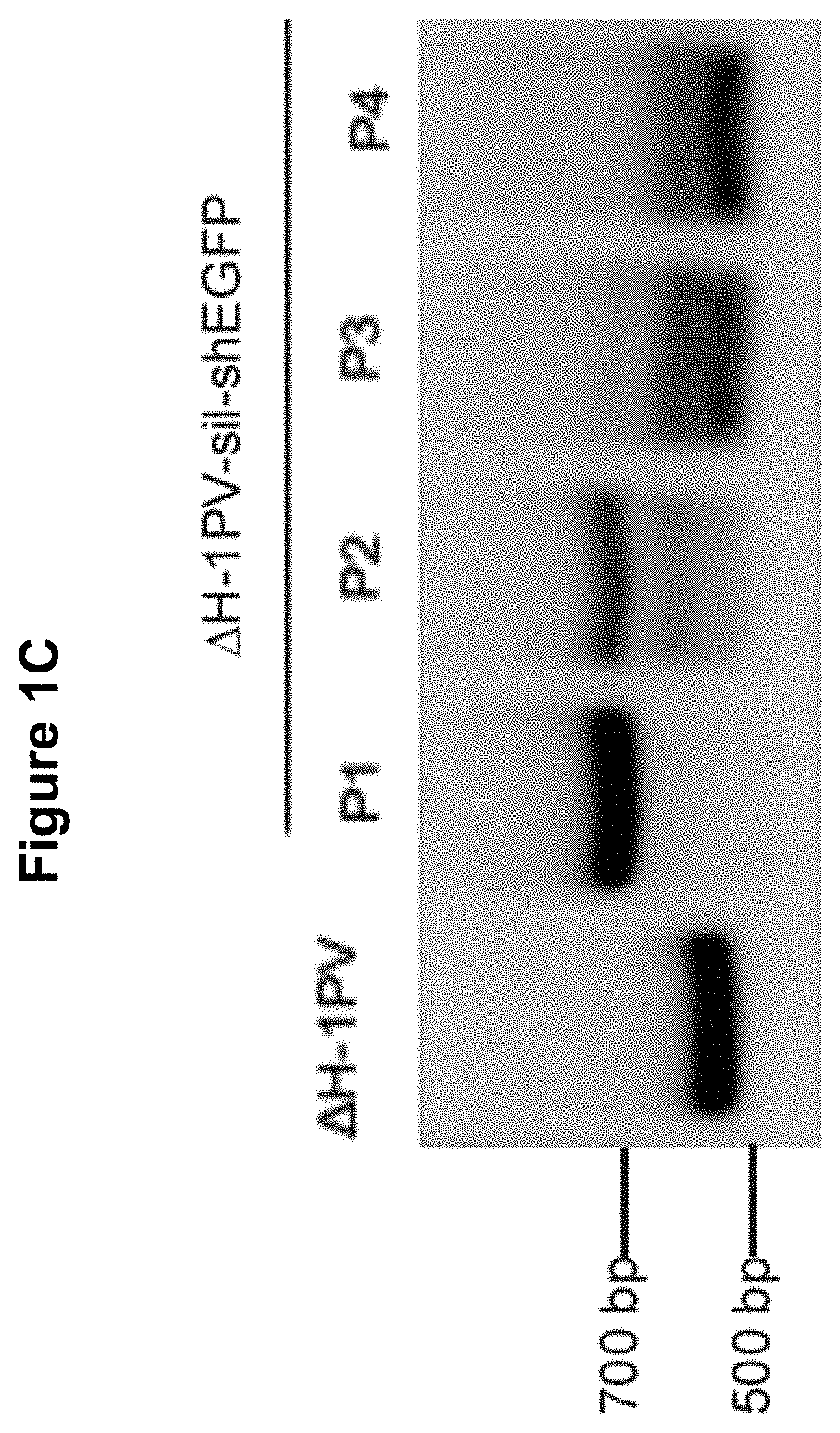Novel oncolytic parvoviruses with enhanced cargo capacity, stable shRNA expression cassette and novel immunogenic properties
- Summary
- Abstract
- Description
- Claims
- Application Information
AI Technical Summary
Benefits of technology
Problems solved by technology
Method used
Image
Examples
example 1
of Novel H-1PV Variants Featuring Deletions within the Uncoding Region of their Genome
[0120]It has been reported that the integrity of the untranslated region is essential for effective virus replication. We have propagated the ΔH-1PV-sil (FIG. 1A) in NB324K packaging cell line according to the production protocol depicted in FIG. 1B. Unexpectedly, it is found that the untranslated region containing the cassette was unstable. Indeed, PCR-mediated amplification of the region produced different fragments whose size was smaller than expected, suggesting the occurrence of deletions in that region (FIG. 1C). To find out whether all or only a part of the cassette was cut out from the ΔH-1PV-sil genome, the ΔH-1PV-sil untranslated region was amplified by PCR using as a template the lysate from ΔH-1PV-sil-shEGFP infected cells and PCR primers lying outside the cassette insertional site. The PCR product was then cloned into pCR-Blunt II-TOPO plasmid and used for bacteria transformation. DNA ...
example 2
persilencer with Stable shRNA Expression Cassette
[0123]We hypothesized that ΔΔH-1PV-v1 displaying an additional deletion in its genome may have superior cargo capacity in comparison with the ΔH-1PV-sil and keep the shRNA expression cassette in its genome more stably integrated. To verify this hypothesis, the same shRNA expression cassette present inΔH-1PV-shEGFP including a shRNA sequence against the EGFP gene, was cloned into the ΔΔH-PV-v1 genome within its untranslated region (FIG. 2A), thus generating H-1PV-supersilencer shEGFP (H-1PV-supersil-shEGFP). HEK293T cells were transfected with plasmids carrying the ΔH-1PV-sil-shEGFP or H-1PV-supersil-shEGFP viral genome and then viruses produced via transfection were used as an inoculum for the infection of NB324K cells. Three rounds of amplification (P1, P2 and P3) were performed in NB324K according to the scheme depicted in FIG. 1B cells. At the end of each passage complete lyse of the cells was observed as an indicator of good virus...
example 3
encer
[0126]Following OVs treatment the insurgence of neutralizing antibodies inactivates the virus, hampering its infectivity and consequently the anti-tumor efficacy. Furthermore, anti-viral antibodies preclude the repetitive systemic administration of OVs. Combination of different viruses to be used in co-sequential way may overcome this limitation and improve clinical outcome. We explored the possibility of using other protoparvoviruses for gene silencing. As an example, LuIII is selected, which has been described to have promising oncolytic activities. LuIII is an autonomous parvovirus of the genus Parvovirus.
[0127]While H-1PV and LuIII belong to the same genus, these viruses differ sufficiently in their capsids so that antibodies developed against H-1PV will not recognize and neutralize LuIII (and viceversa), allowing co-sequential use of these viruses in cancer therapy (in combination or not with other anticancer therapies). However, to date there is no published report descri...
PUM
| Property | Measurement | Unit |
|---|---|---|
| Immunogenicity | aaaaa | aaaaa |
Abstract
Description
Claims
Application Information
 Login to View More
Login to View More - R&D
- Intellectual Property
- Life Sciences
- Materials
- Tech Scout
- Unparalleled Data Quality
- Higher Quality Content
- 60% Fewer Hallucinations
Browse by: Latest US Patents, China's latest patents, Technical Efficacy Thesaurus, Application Domain, Technology Topic, Popular Technical Reports.
© 2025 PatSnap. All rights reserved.Legal|Privacy policy|Modern Slavery Act Transparency Statement|Sitemap|About US| Contact US: help@patsnap.com



